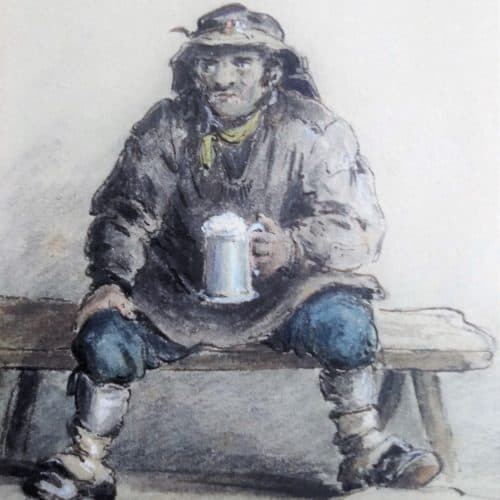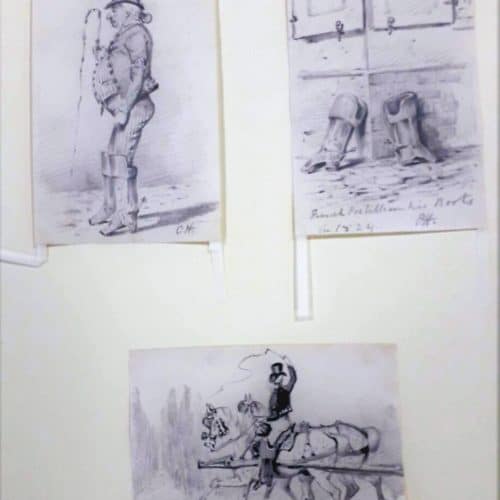Master Collection 12: Coal porter and postillion
This man is about to drink a pint of beer from a pewter tankard.
He’s wearing boots, a smock (a heavy linen outer garment worn by working people in the 18th and 19th century) and a hat with a wide brim down his back.
He works as a coal porter. He carries sacks of coal on his back: the wide brim of his hat protects his back. His face and hands are black from coal.
In Victorian times coal was used as a fuel to heat people’s homes, to power heavy machinery in factories and as a fuel for railway locomotives and steam ships. It was dirty and caused lots of smoke and pollution.
Portraits of working men like this are very rare. Artists usually focussed on subjects of interest to their patrons (the wealthy people who bought their pictures).
This pen and ink and watercolour painting by Charles Cooper Henderson (1803-1877) was originally owned by William Wells of Penshurst, Kent.
Wells was descended from an old Kentish family connected with shipbuilding at Blackwall Docks on the Thames. He supervised the building of Royal Navy ships, including three that fought at the Battle of Trafalgar. When he retired he took up gardening and art collecting.
Charles Cooper Henderson specialised in pictures of coaches and coachmen.
Did you know?
Porter is a type of beer first brewed in London in the 18th century. Its name originates from its popularity with street and river porters.
This is a French postillion sketched by artist Charles Cooper Henderson in 1824.
A postillion rode on the leading horse (usually the one on the left) of a pair pulling a long-distance horse-drawn stagecoach or post chaise.
He’s wearing a top hat, an open-style jacket with decorative buttons, striped waistcoat and trousers, and postillion’s boots. The boots have a sketch of their own! He’s also holding a long horsewhip.
His job was to make sure the horses kept to the road and to speed them up with a whip.
Can you see him doing this in the sketch with horses?
His legs had to be outside the shafts, or wooden poles, which ran from the coach to the horses. To protect his legs from getting bashed by the shafts, or caught between horses, he wore solid postillion’s boots. These boots were made of iron and leather.
He usually carried his valuables under his hat!


